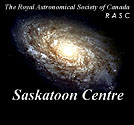 |

Observing & Sketching Open Star Clusters
**********************************
Richard Huziak, Saskatoon Cenre, RASC. October 4, 2002
I don't think you can call yourself an observer if you haven't, for at least some of your observing career, sketched what you are looking at. Mr. Ken Lemke of the Hamilton RASC challenged me to do the same. Sketching should be an integral part of observing, as far as Ken and I are concerned, because, in his words "it forces me to dwell on the object rather than take a quick peek, which is what I see many people doing". When you have to commit a view to paper, you have to really spend time looking at the finer details to decide where exactly this blob or that wisp goes on the drawing. Since sketching takes time, you spend more time at the telescope per object. The by-product of this is that your eyes receive more and more photons with which to do their work. Eyes are amazing tools, much underrated by new observers. Like film, they continue to collect photons over a long period, and your brain takes these signals and constructs a more and more detailed image over time. By utilizing this technique of spending at least 10 minutes per observed object at the eyepiece, I find it rare that I do not see star clouds, dark clouds or spiral arms in
virtually every galaxy brighter than 14th magnitude using a 12.5"telescope! If you are not seeing the same (in good skies), then you are not "observing".
This is the downfall of the new generation of "go-to" boys and girls! The computer does all the work, and finds an object. A quick glance ensues, then the button is pushed and a whirring sound is heard. At a recent star party, a go-to guy "observed" 25 objects that he had never "seen" before in about 15 minutes. He then didn't know what to do. He stood there and wondered out loud if anyone else had any coordinates that he could feed in! Well, with my 10-minutes per object rule, it would (should) have taken 4 hours for him to OBSERVE his list. He would have "seen" what astronomy is all about! But this is a diversion.....I really did complete Ken's challenge.
Star clusters are not my favourite objects to sketch, because many have WAY too many stars to plot. However, I almost always sketch the lesser-known clusters if they have fewer than 100 stars. But again, sketching makes you look. Star clusters are filled with interesting detail. Ken mentioned that I should look at the colours of the stars. Most of the colours I see in star clusters are the red giants. Most star clusters have these hanging around - these are generally the brightest stars, and if you look closely, they are indeed red! The double cluster in Perseus has an over-sprinkling of them, for example. The other stars are harder to see colours in, except for the brightest star clusters, such as the beautiful blue stars of the Pleiades, or the brilliant electric blue-white of the O-type stars in the alpha Persei cluster. Most of the red giants are also low amplitude variable stars! A chart in the December 1990 issue of Sky & Telescope (I think) provides a guide for estimating the stars in the Double Cluster, which I do as part of my AAVSO program.
Star clusters are also full of double stars of all descriptions - close and wide. I almost always find interesting doubles, and if these are bright, they usually have some colour. Doubles and general star grouping patterns give every cluster its own character! That's the fun part about observing clusters - they all have different character. There are also enough open clusters of every description to meet the observing needs of eyes, binoculars or any size telescope!
To fulfil Ken's challenge, I observed two star clusters, though this was done under horrific skies due to a brilliant aurora display going on! (I'll reobserve these another day under better skies). I observed NGC 7708 in Cepheus, which, according to some sources is likely not a true cluster, but it looks like one anyway. The brightest star is likely a foreground object, and appears to be faintly blue. There is also a nice orange/red star on the SE edge of the cluster. Maybe it is the red giant for this grouping! Most of the brighter stars in this grouping appear to be light blue, though white is more likely. This is a very poor
cluster, and it would be likely overlooked if it had not been charted in my atlas! Maybe this is why I haven't observed it until now! The sketch for NGC 7708 in Cep can be found at:
http://duke.usask.ca/~rasc/pdfs/RH_p6366.pdf
Because NGC 7708 was such as poor cluster, I figured I'd had to give Ken more for his money, and I also observed Collinder 463 in Cassiopiea. This is markedly different than NGC 7708. Though dim and not standing out well from the background, this cluster contains three cool double stars near the center. On the sketch, I've designated these as "1, 2 & 3". They are: 1: 11m, 12m, 12" sep, 2: 23m, 13m, 12" sep, 3: 23m, 23m, 3" sep. The brightest stars "A" and "B" might be yellow - these then might be this cluster's red giants. The cluster contains stars from 11th to 14th magnitude. Aurora was burning, but this cluster is quite
interesting, and really deserves another look under better skies. The sketch for Cr 463 in Cas can be found at: http://duke.usask.ca/~rasc/pdfs/RH_p6367.pdf
The "enjoy" part was the best and easiest part of the challenge! Thanks, Ken!